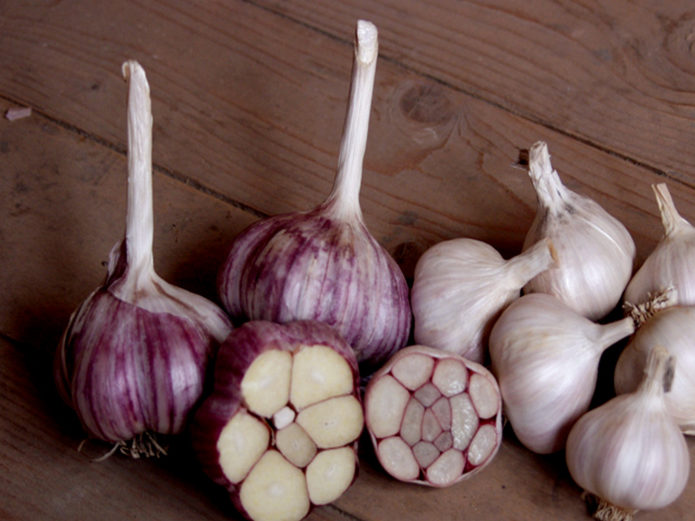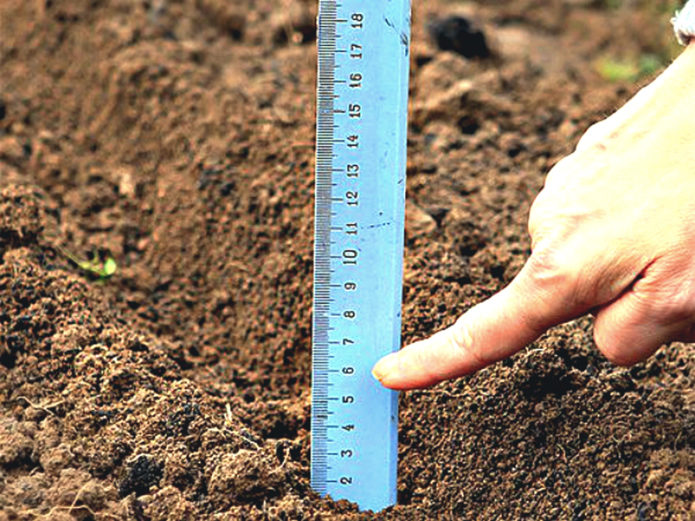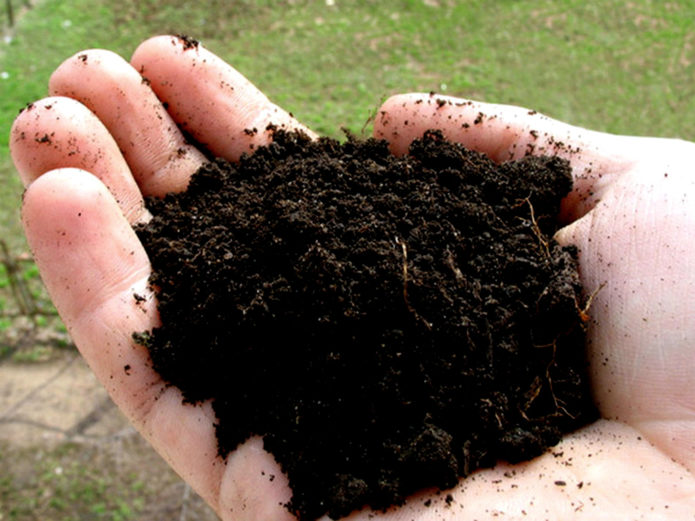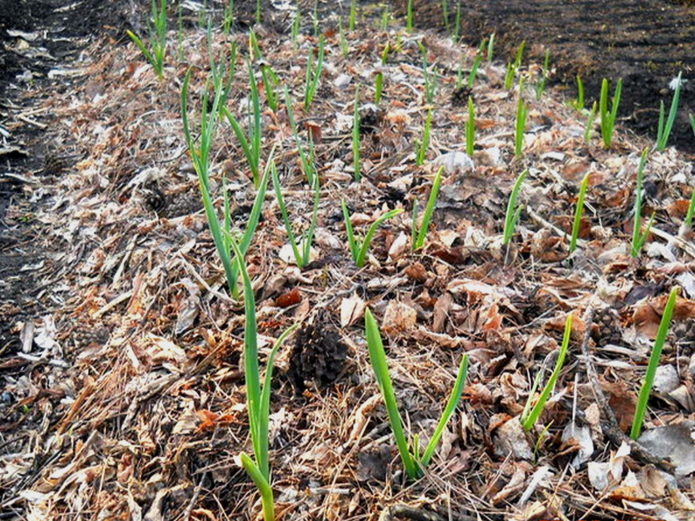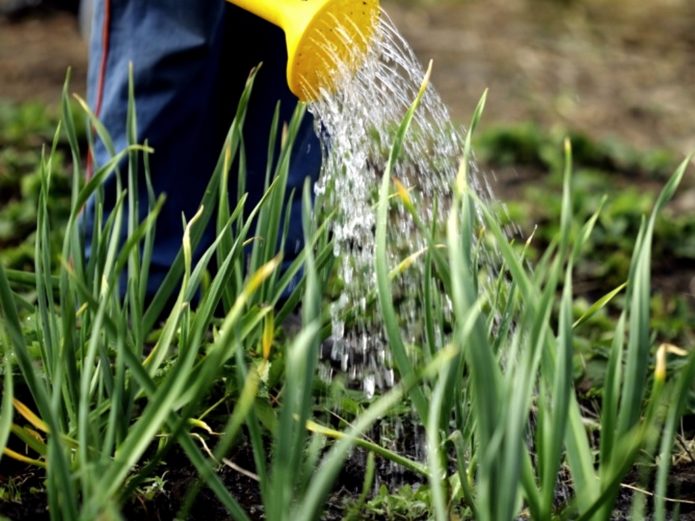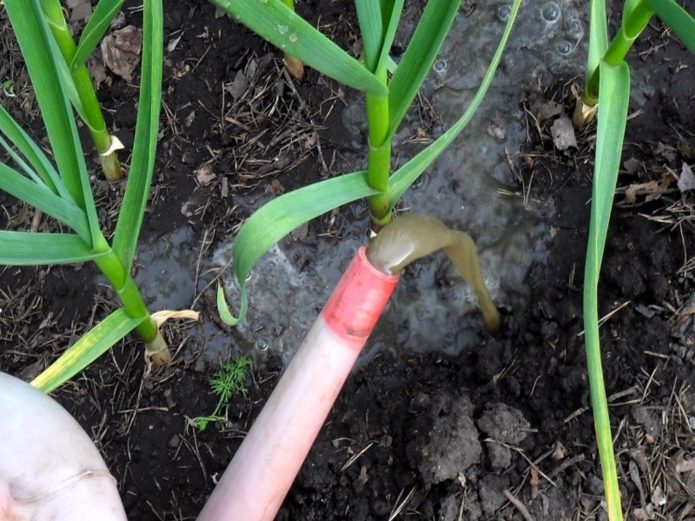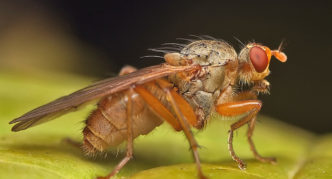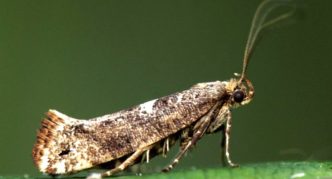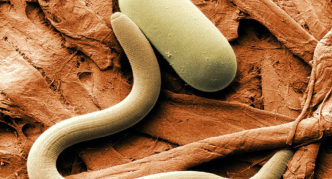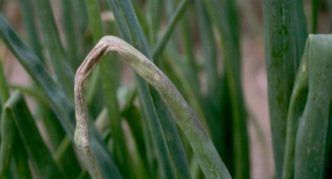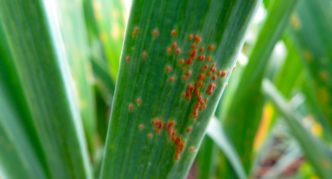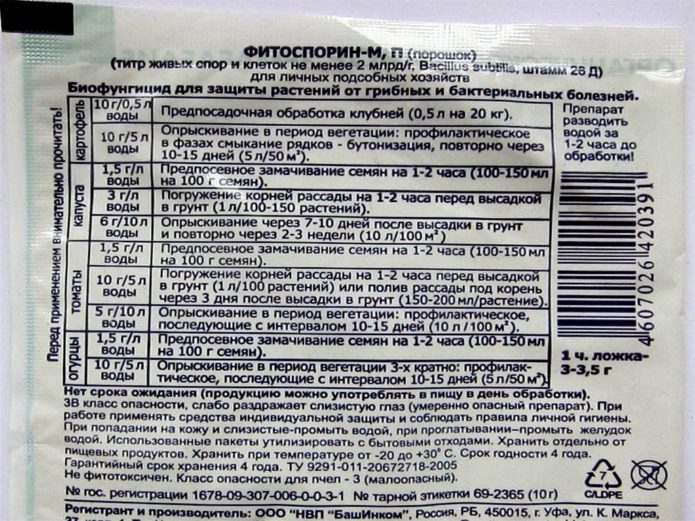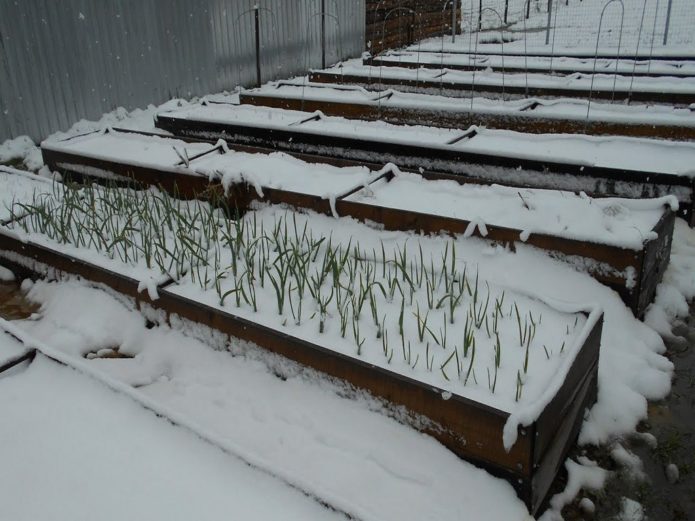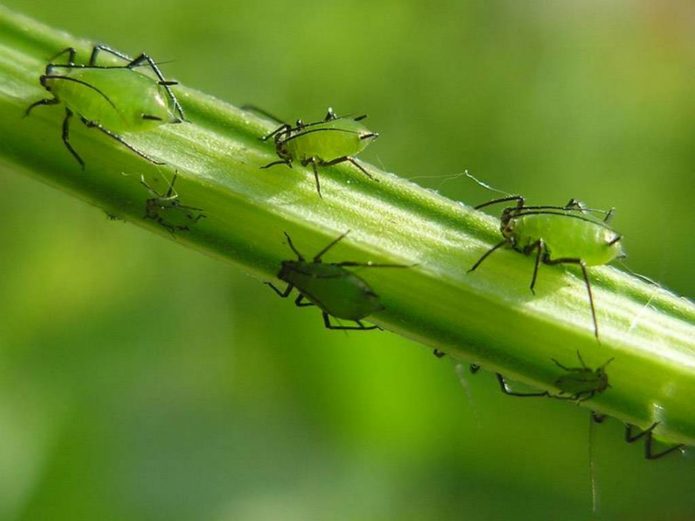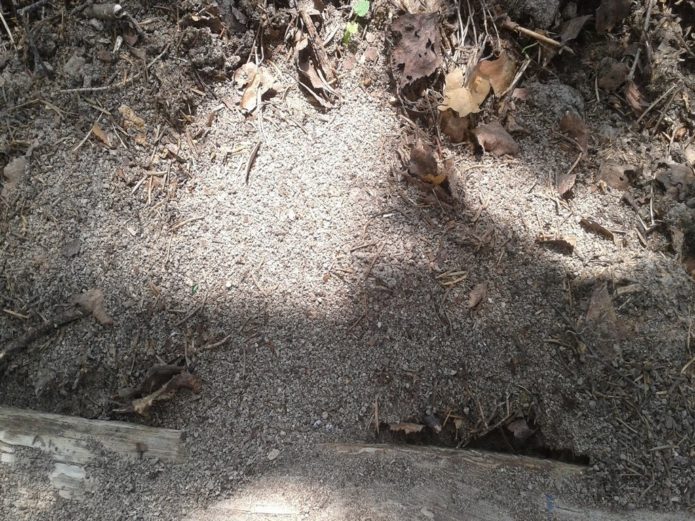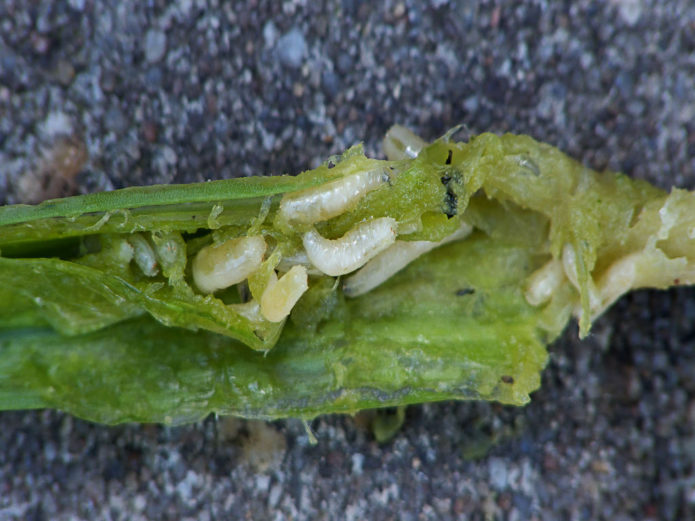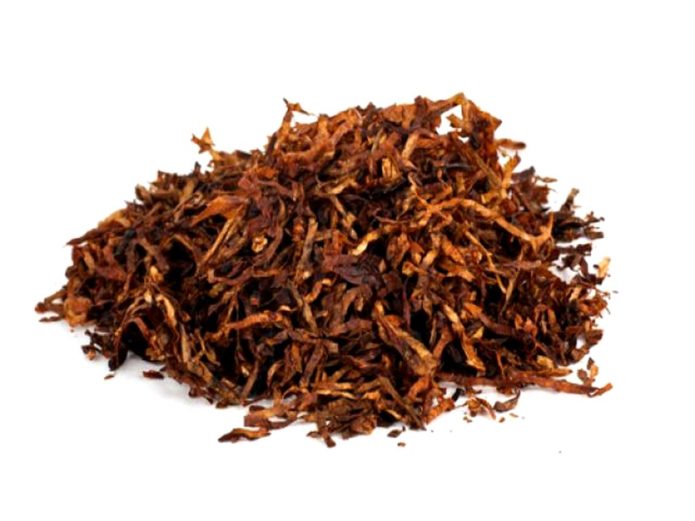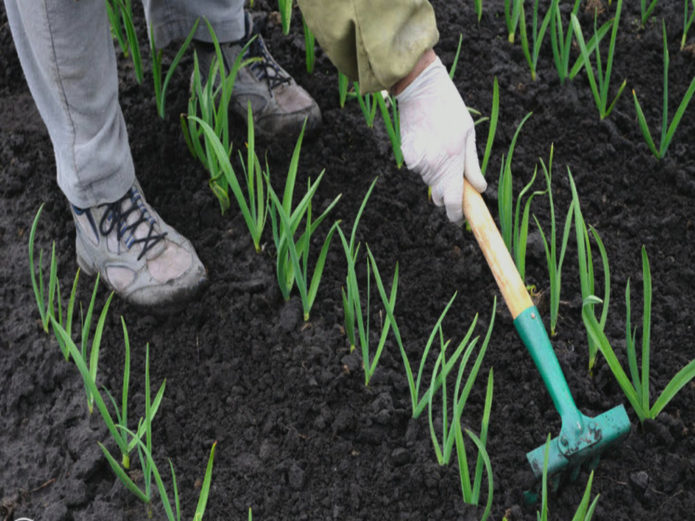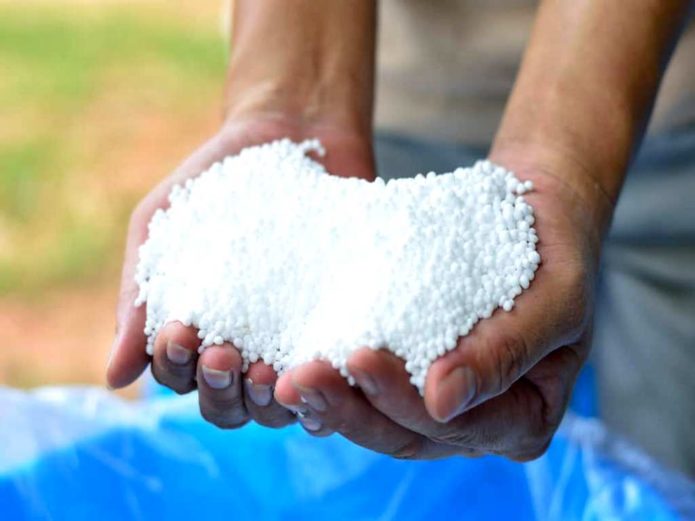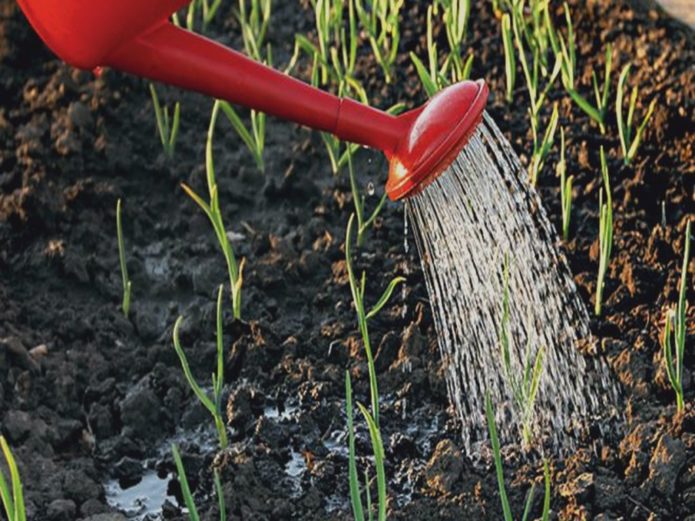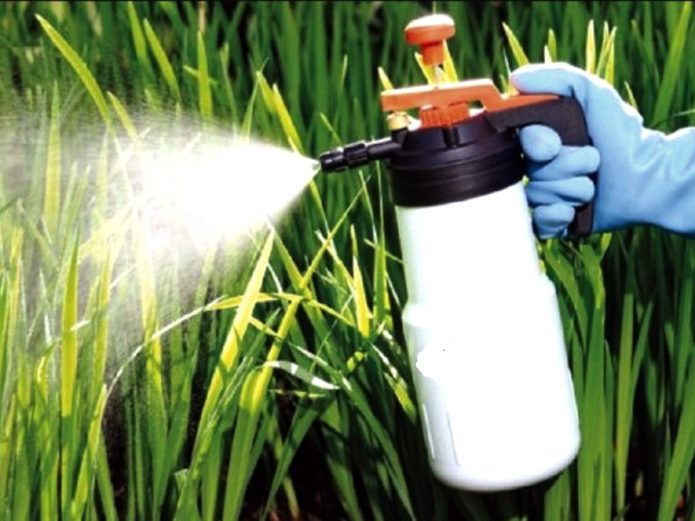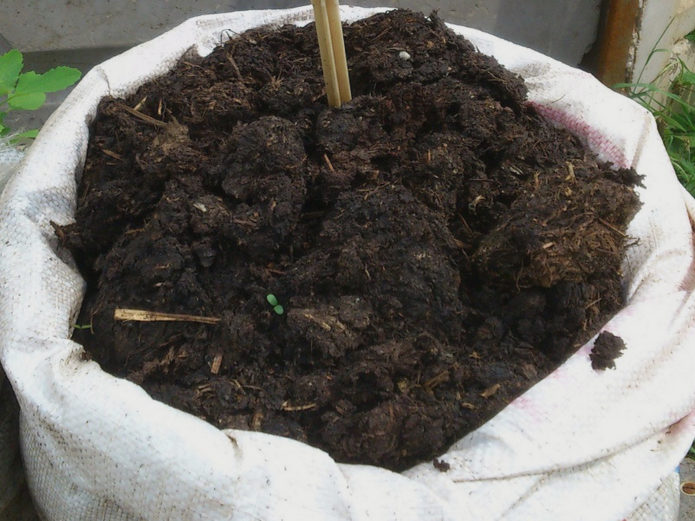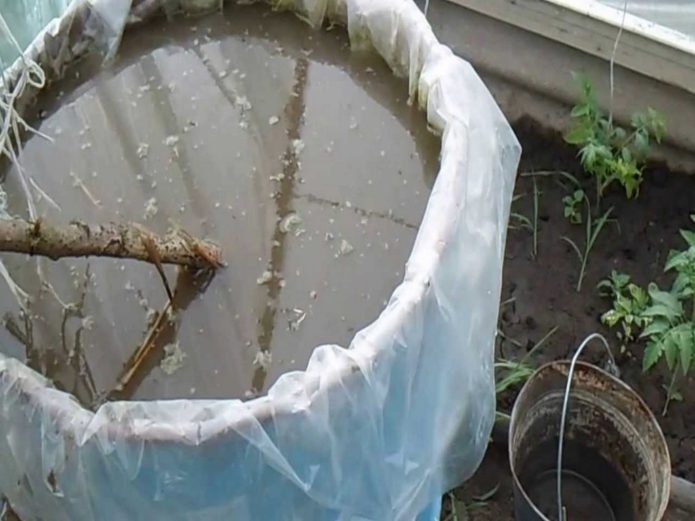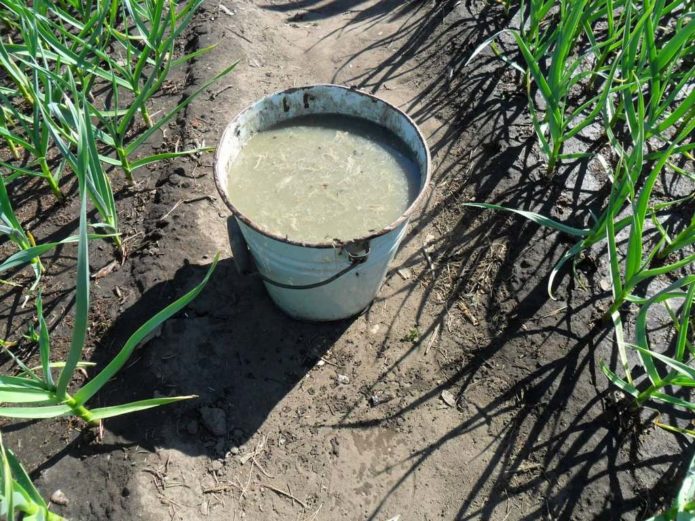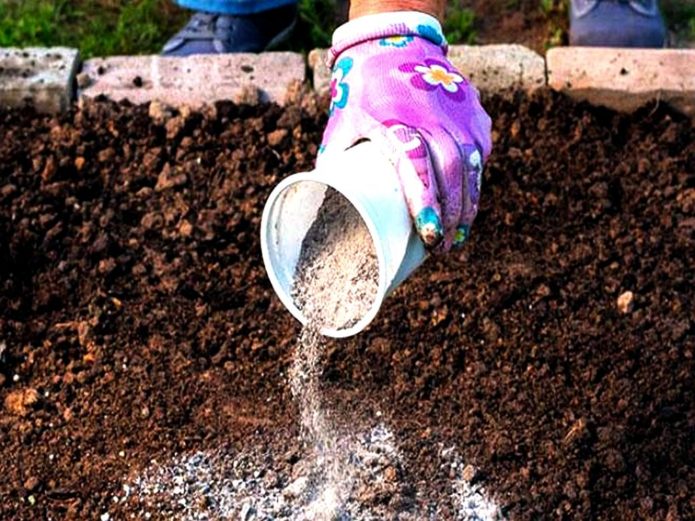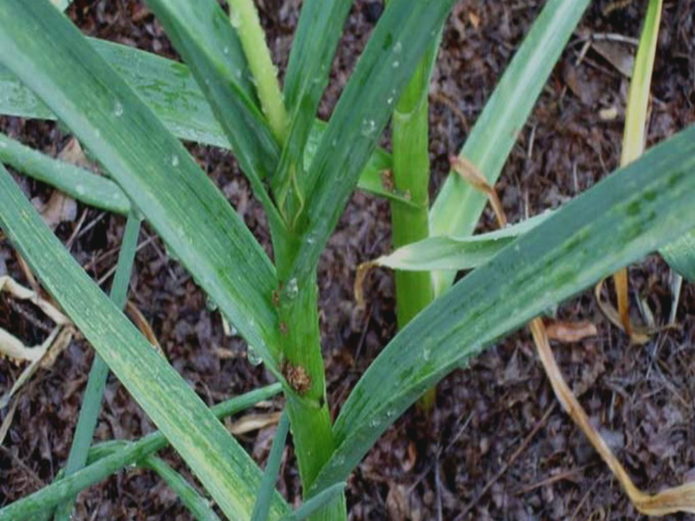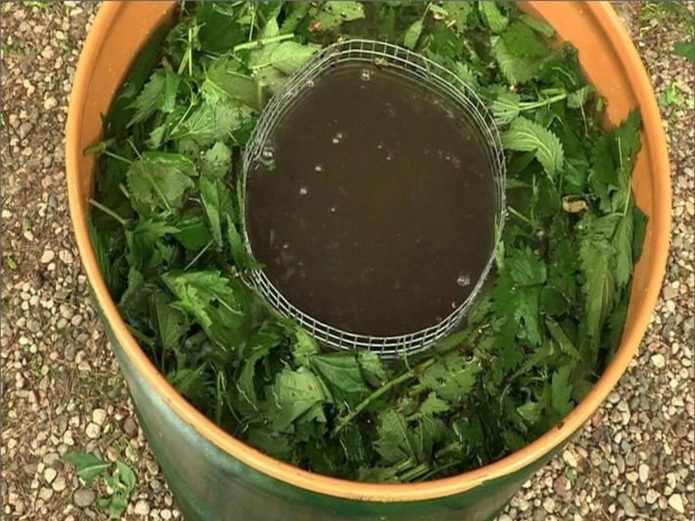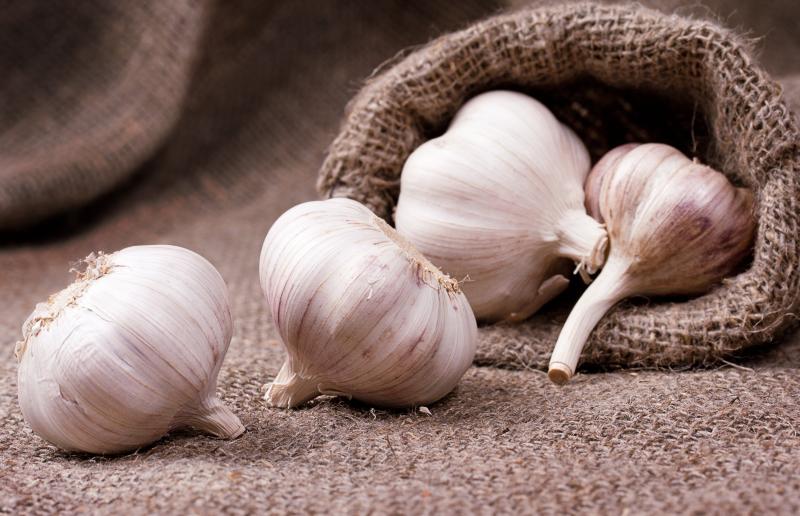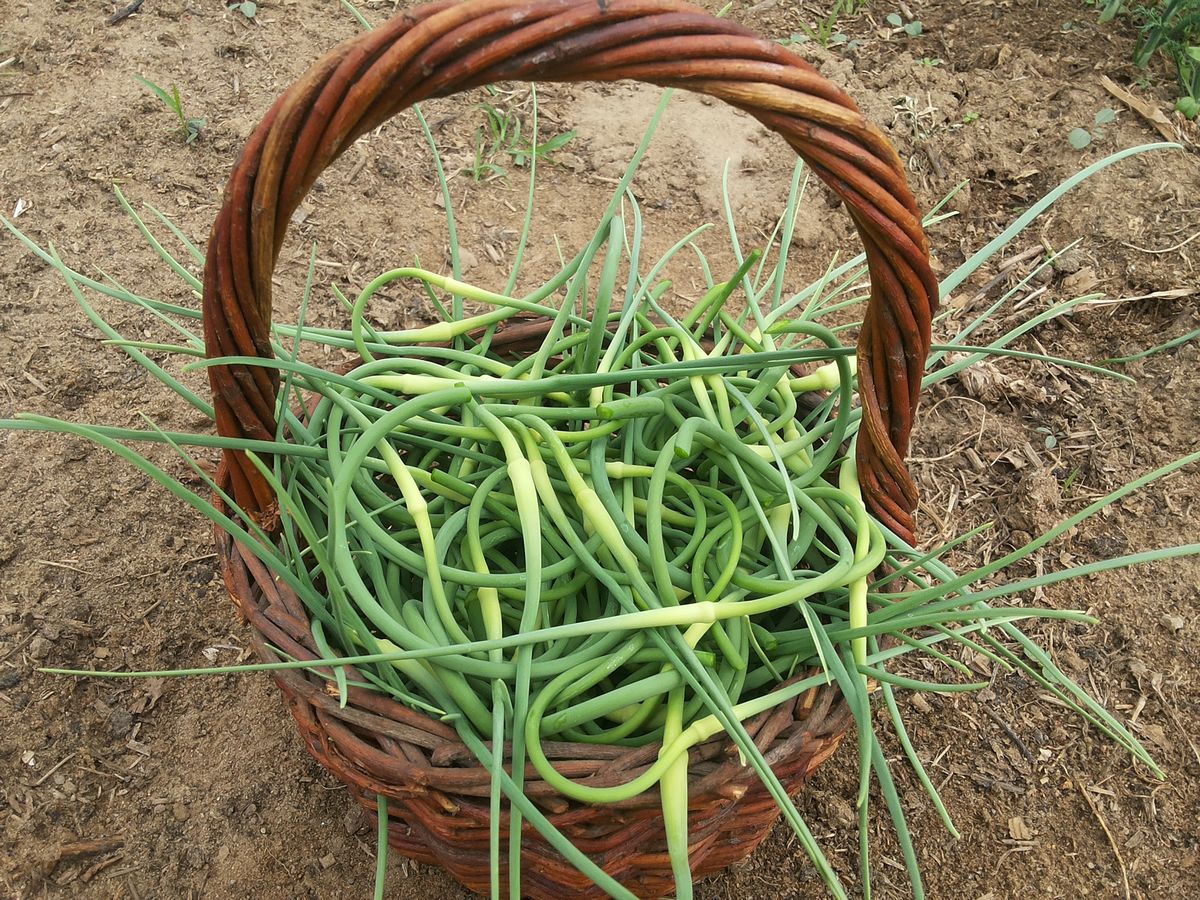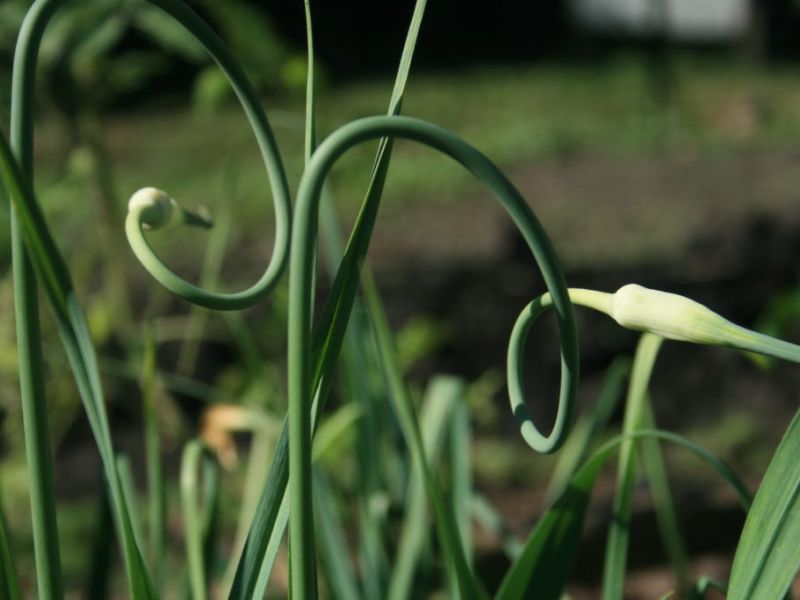Garlic is one of the most popular vegetables in the world. This herbaceous plant belongs to the onion family. Loves light, moisture and fertile soil. It has a pungent taste and a pungent odor. Garlic cloves are not only used for food, but also serve as planting material. The leaves and arrows of young plants are also edible, but what if they start to turn yellow?
Content
Varieties of garlic
By the timing of planting, two groups are distinguished:
- Spring garlic is planted in spring, it is not afraid of frost. Non-shooting variety. It has small heads with 25–30 lobules, which are arranged in a spiral. The yield is low. Long-term storage.
- Winter vegetables are planted in the fall, they hibernate in the open field, under the snow. Form arrows, have large heads with 8-10 teeth arranged in a circle around the shaft. High-yielding species. Not stored for a long time.
The main causes of yellowing
Usually yellowing starts from the tips, gradually spreads to the leaves and stems of garlic - this is chlorosis.
Chlorosis is a plant disease in which the formation of chlorophyll in leaves is disturbed and the activity of photosynthesis decreases.
Consider the factors that negatively affect the growth and development of vegetables.
Failure to comply with agricultural techniques
So that your work is not in vain and brings good results, you must follow some rules. The planting pattern of this culture is 25–30 × 6–8 cm.
Landing location and depth
Garlic is a sun-loving plant, you need to place the garden bed on the southern or southeast side of the site, without shading. It has a superficial root system, therefore, during autumn planting, it is buried no more than 4–6 cm. Particular attention is paid to the composition of the soil: if the soil is light and loose, the teeth are planted 2-3 cm deeper, and with heavy, dense soil, do this not necessary. In the spring, when the soil temperature reaches + 3 + 5 °, they start planting a spring crop at a depth of 3-4 cm. Recessed planting is one of the reasons for the yellowing of the tips of the leaves.
Choose the right planting time so that the plant does not have time to start growing ahead of time and discard leaves that can freeze and turn yellow.
Table: timing of planting garlic in the regions of Russia
| Landing dates | Moscow region and middle band Of Russia | Siberia and the Urals | South Region |
| Autumn | end of September or early October | mid September | November |
| Spring | second half april | middle or end May | end of March |
The soil
Garlic should not be planted after onions and potatoes, which have common diseases. The best predecessors are green manure, legumes, pumpkin, zucchini, cucumbers and strawberries.
This crop is planted in neutral soil. If the soil is too acidic, it is necessary to lower its acidity by adding any kind of lime (limestone powder, dolomite flour, wood ash, chalk, etc.) before the autumn preparation of the beds. To increase soil fertility, add 20-30 g of superphosphate, 20 g of potassium fertilizer per 1 m while digging2 and mix well.
Mulching
After planting the garlic, be sure to mulch the soil with foliage or straw to protect the seedlings from winter and spring frosts, which can negatively affect the development of vegetables, including its appearance. A young feather may start to turn yellow.
Video: planting garlic with mulch
Incorrect watering
If the water balance is disturbed, the leaves of garlic turn yellow: if there is a lack of watering in dry weather, from excess moisture on rainy days, or if the norms of soil moisture are not followed.
It is optimal for this crop to water once every two weeks, when hot - 1-2 times a week, and in rainy weather, it is better not to water the plants. Use water that is settled, warmed up in the sun. Stop moistening vegetables a month before harvesting.
Experienced gardeners recommend growing garlic in high beds to avoid moisture stagnation, so that the roots do not suffocate due to lack of oxygen.
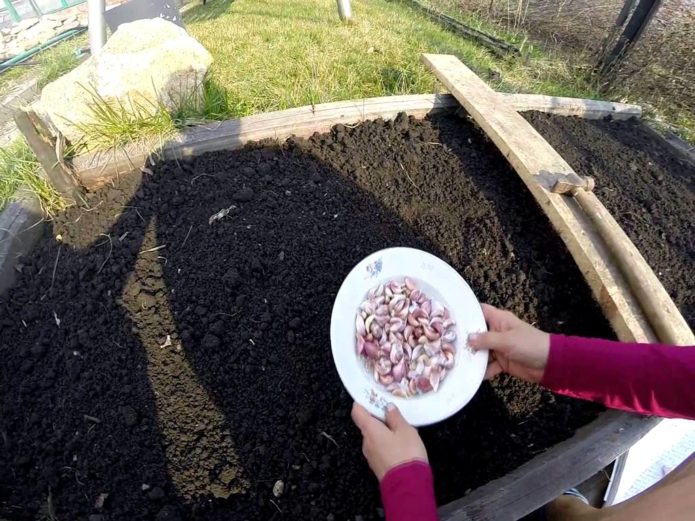
Garlic grown in a high bed is less susceptible to fungal diseases and does not suffer from excess moisture
Table: watering rates for garlic
| Summer weather | Water rate, l 1 m2 |
| Standard | 10 |
| Arid | 12–15 |
| Cool | 5–7 |
Video: tricks of watering garlic
Nutrient deficiency
One of the reasons garlic turns yellow is a lack of nitrogen, potassium and magnesium. To avoid this after the snow melts from the beds, it is necessary to feed the vegetables with nitrogen-containing mixtures, humus or urea.
If yellowness does appear, then repeat the feeding after a week.
Pests and diseases
Garlic has phytoncidal properties.
Phytoncides (from the Greek φυτóν - "plant" and Latin caedo - "I kill") are biologically active substances formed by plants that kill or suppress the growth and development of bacteria, microscopic fungi, protozoa.
It is often used to repel pests from other crops. However, he himself suffers from onion flies, moths, ticks, aphids, ants, nematodes, etc.
Photo gallery: pests of garlic
- Onion fly - a pest of garlic
- Onion moth - a pest of garlic
- Nematodes - pests of garlic
Among the common diseases of garlic are known: downy mildew, fusarium, rot, rust, mold, etc.
Photo gallery: major diseases of garlic
- Downy mildew is a common disease of garlic
- Rust is a common disease in garlic
- White rot is a common disease in garlic
To make sure there is any damage, dig up the yellowed garlic and inspect it carefully. If there is mold, rot on the roots, larvae or plaque on the bottom, immediately start treating plants from pests and diseases. The best remedy is timely prevention.
Video: pests of garlic
Basic methods of struggle
Since early spring, all gardeners are delighted with green shoots of garlic, which make their way through the layer of mulch and snow. But suddenly the tips of the plants turned yellow, what to do?
Use of finished products
Strictly follow the instructions for use of drugs recommended by the manufacturers:
- Before planting, you need to process the garlic, for this, soak the cloves in a pink solution of potassium permanganate, Maxim or Fitosporin-M.
- Vegetables can suffer from cold snaps and temperature changes. Leaves stuck in frost turn yellow and must be sprayed with stimulants - Zircon, Epin, Silkom or Amber acid. These preparations will increase the immunity of plants and affect the formation of new leaves.
- Use insecticides against insect pests: Fufanon, Karbofos, Actellik.
Video: a review of preparations for processing garlic
Folk remedies
Resort to using folk methods:
Ammonia
This is a 10% ammonia solution. It can be purchased at any pharmacy.
What are gardeners using it for? The answer is simple: it contains 82% nitrogen. Moreover, it is an excellent preventive measure. The calculation of the required amount of alcohol depends on the purpose of its use:
- To protect against onion flies, add 10 ml to a saline solution (we will consider its preparation further).
- From root nematode - 40 ml per 10 liters of water with the addition of 2-3 drops of iodine. This product is enough to process 2 m2, after which the garden must be watered. Repeat after 10 days.
- From aphids - 20 ml of alcohol and 100 g of grated laundry soap per 10 liters of water. Insist the solution for 1–2 hours. It is better to spray in the morning, in cloudy weather.
- For ants - 40 ml per 1 liter of water. Pour the prepared solution into the anthill, after removing the top layer of earth from it.
- A solution of 60 ml of ammonia per 10 liters of water is used as a fertilizer for watering a garlic bed.
Among other things, useful for plants, ammonia also acts as a remedy against pests - aphids, houseflies, worms, jumpers and other nasty things that spoil all the "raspberries" for you (raspberries can also be processed). Well, such a top dressing, as already mentioned above, will help with rapid growth.
Video: ambulance for yellowing garlic
Salt
The appearance of worms in the leaves of garlic is the laid eggs of the onion fly.
If they are found, it is necessary to prepare a solution at the rate of 200 g of table salt per 10 liters of water and spray the tops or shed the soil. Norm: 1 glass of solution for 1 damaged plant. The next day, the garden bed must be moistened with plain water and tied with wood ash. Repeat after 10 days.
Video: using salt in the garden
Makhorka
To scare away insects, a mixture of makhorka and lime is used in a 1: 1 ratio, with which vegetables are poured.
Mixed landings
Plants planted in the aisles will help protect the garlic. These are calendula, tagetes, etc., the juice of which is poisonous to pests.
Video: vegetables neighbors in the garden
https://youtube.com/watch?v=CEeDNTSy1_g
Spring feeding
After a long winter, it is necessary to help the plants regain their strength, for this it is necessary to apply nitrogen-containing fertilizers. It is best to do this 1-2 weeks after the snow melts. In this case, the protective layer of mulch from the garden must be removed.
Option 1
- Loosen the aisle.
- Make grooves 1–2 cm deep.
- Spread granular fertilizer (urea or ammonium nitrate) into the wells.
- Cover with earth.
- Water the entire bed with water.
- Cover the row spacing with compost or dry soil.
Option 2
In fact, this is the same way. The differences are as follows:
- Dissolve 1 tablespoon of urea or ammonium nitrate in 10 liters of water.
- Shed a row of plantings.
- Norm: 3 l of liquid per 1 m2.
- Mulch the garden bed.
Video: feeding garlic in spring
Option 3
The best way to provide the plant with nitrogen when garlic turns yellow is to apply foliar feeding.
Foliar dressing is a fertilization technique in which plants receive nutrients through the leaves.
To do this, dissolve 25-30 g of urea in 10 liters of water and spray the feather.
Video: the importance of foliar plant nutrition
Organic fertilizers
For summer dressing, fertilizers are used that improve the quality of the crop.
Mullein
It is an aqueous solution made from cow dung. It contains all the nutrients for the development and fruiting of vegetables, as well as macro- and microelements. Such an infusion should be prepared two weeks before its use:
- Take one part of the manure.
- Dissolve in six parts warm water.
- Insist for 12-15 days.
- Dilute the infusion in a ratio of 1:10.
- Water the row-spacing of the bed.
- Mulch the soil.
Ash
During the period of active formation of garlic bulbs, it is imperative to feed the culture with phosphorus-potassium fertilizers, the best of which is wood ash. The technique is simple:
- Make grooves in the row-spacing 2-3 cm deep.
- Spread ash in the amount of 1-3 glasses per 1 m2.
- Loosen with a rake.
- It is good to water and mulch the bed with peat, compost or humus.
You can use an aqueous solution for irrigation, adding 1 glass of ash to 10 liters of water, or dry treatment of plants by rubbing a bed of garlic with ash. The main thing is that these dressings must not be mixed with the introduction of manure, bird droppings or superphosphates into the soil, when interacting with which their effect is weakened.
Video: summer garlic dressing
Green fertilizers
The preparation of such fertilizers is very popular these days. It is a liquid organic natural supplement.
Video: natural nettle fertilizer
Autumn dressing
By the time of harvest, yellowing, drying of the leaves and stalks of garlic is normal. This suggests that you can pick vegetables from the garden. Usually it is July for winter and August for spring varieties. After that, you should prepare the land for its further use. Why apply specialized fertilizers to the soil for the autumn digging of beds for growing garlic. These are Onions and Garlic, Agricola 2, Kemira, Fertika and others. Strictly follow the manufacturer's instructions for their use.
For me, the fertilizer "Onion and Garlic" is very convenient to use - I put it into the ground after harvesting (in September) and dig up the garden bed. After October 15, I will plant winter garlic on a previously prepared garden bed and fertilize it for the second time only in summer. This will allow the garlic to quickly "wake up" in the spring after the cold weather and vigorously start growing.
Prevention of yellowing of garlic
High-quality crop rotation is the key to success in the fight against diseases and pests.
Crop rotation is a scientifically based alternation of crops and fallows in time and territory or only in time.
Plants are planted in their original place after 3-5 years. By this time, fungal and bacterial spores have died. And adherence to agricultural technology and the use of healthy planting material are the basic rules for preventing yellowing of garlic in your garden.
Video: crop rotation scheme in the garden
You can prevent yellowing of garlic by observing planting technology and proper crop care. Choosing a place, time, fertilizing the soil, regular watering and feeding plants, timely treatment against diseases and pests - all this will help to successfully cope with the causes of yellowing of garlic.
